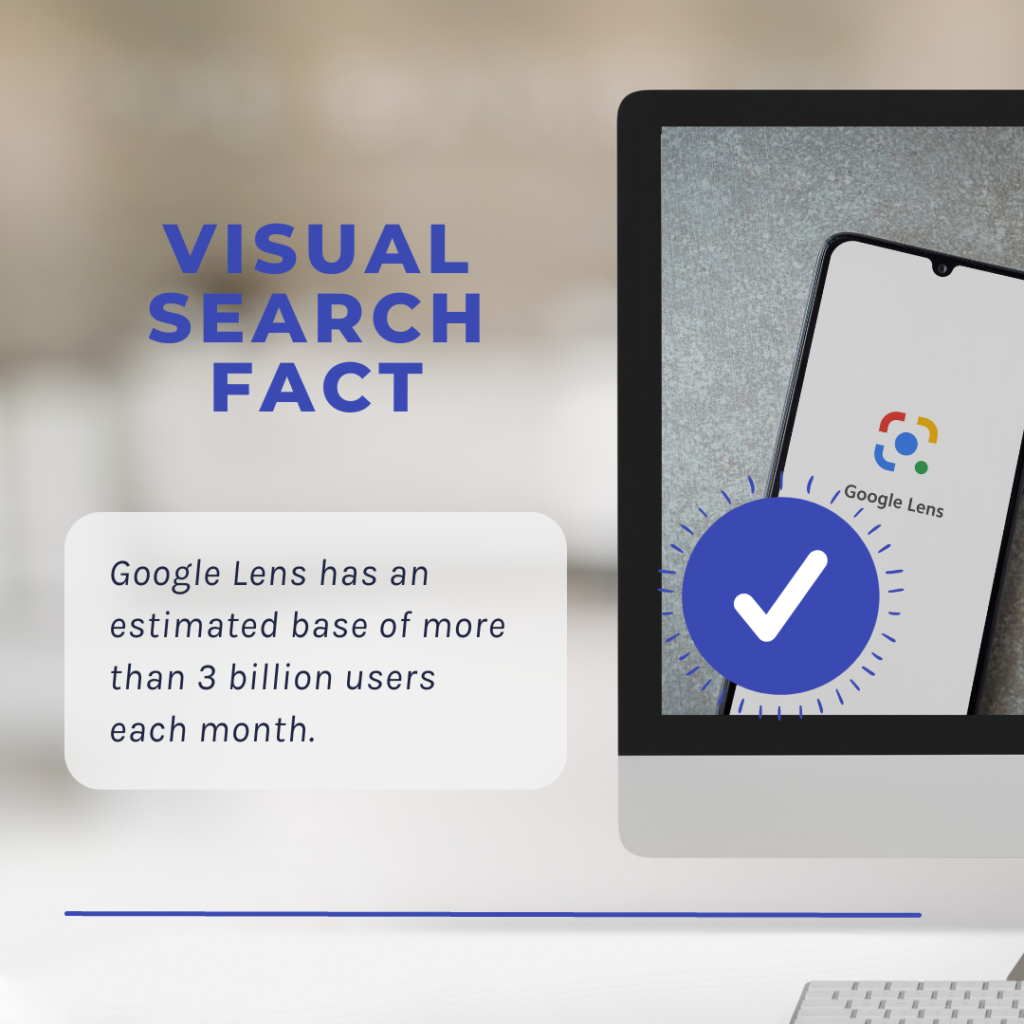Winery DTC Trends To Consider For A More Profitable 2023

by Carin Oliver, CEO of Angelsmith
The Macro Environment
Wineries that could optimize for direct-to-consumer sales during the pandemic experienced some revenue relief from increased consumer demand online. However, as we move into 2023, the changing environment will present challenges to revenue growth. As we emerge from a tumultuous time, we are witnessing a changed wine consumer.
As planning for 2023 is underway, there are macro social issues with the potential to derail winery plans. Additionally, the rapid advancement of technology is also posing challenges for wineries of all sizes. Many of the 2023 web and marketing trends sit on the foundation of the whirlwind tech developments.
This article will touch on both the macro-environmental forces impacting winery DTC growth and the web and marketing strategies and tactics that need careful consideration to avoid pitfalls and maximize revenue throughout 2023.

Values Alignment
Politics have become highly polarized, with consumers drawing hard lines between themselves and their perceived rivals. But it isn’t just politics that are divisive. As Americans become unyielding around public policy, that sentiment also seeps into their selection of brands. Wineries will increasingly need to declare what they stand for and how their values play out in everyday interactions and throughout the organization, not just during campaigns. Nothing angers savvy, affluent consumers more than empty statements.
Social Sales Channel
Social media became primary channels not just for discovery but also for amplifying sales. The number of social sales technology tools has skyrocketed. Brands are scrambling to fortify their sales efforts and explore how to sell more efficiently through Facebook, Instagram, TikTok, and others. While wineries can’t sell directly ON social platforms, they can use those platforms to direct buyers back to your websites. Revenue for Instagram alone in 2021 was an estimated $47.6 billion.
On Angelsmith’s website, our most searched-for pieces of content include articles specifically addressing how to sell wine through Facebook. Although I wrote those pre-pandemic, they have recently experienced renewed interest.
With all generations (minus my mother) embracing direct-to-consumer brands, and the most senior members of Generation Z entering their peak spending years, social channels will continue to be critically important for winery sales. .
Hanover Research reports that brands with omnichannel sales strategies increase customer loyalty and cart value by 13 percent.

Community
After the isolation of COVID and more people working from home, wine enthusiasts are looking for a community. That can take the form of group winemaking classes, member social events, education, and more.
According to IBIS World, group events can also increase member retention. But in order to expand your club memberships, you need to reach beyond your drive markets. This creates more pressure to develop online member benefits.
Creating a community through online members-only content or creating a group name – á la Taylor Swift’s fan base, the “Swifties” (can you tell I have a tween?) – can provide more buy-in from members. Consumer desire for community is encouraging wineries to reconsider elements of their loyalty programs to accommodate the changing needs of consumers.
Economy
Lastly, the elephant lumbering about is the economy. Rising interest rates, higher utility costs, gasoline prices, and overall inflation is squeezing consumers and putting pressure on the travel industry. According to Hospitality Net, the bright spot is business travel. It is expected to approach pre-pandemic levels.
The economic uncertainty has already had a cooling effect on spending. In a recent study by Numerator, 60% of respondents reported being “highly concerned” about the economy. Long-haul travelers to the United States are also expected to decline in 2023 according to the U.S. Travel Association’s latest report.
Buyers of all types are beginning to pull back on ongoing commitments. This will impact your membership retention and conversion rates in the tasting room as well as your overall sales velocity. Although Angelsmith has had no long-term contracts and flexible payment plans for years, it is now a priority discussion with potential clients. Across all verticals, we are seeing membership agreements become more flexible.

2023 Web & Marketing Trends
There are twelve trends on our radar that we are both implementing for our clients and witnessing throughout both the winery world and other verticals. While this article doesn’t consider every 2023 trend, the below are the ones we frequently evaluate and implement because they deliver the best return on investment.
The throughline for most of these trends is:
People first, not winery first.
This is a continuing paradigm shift from asking the question, “What would be good for the US” to “What problem are we trying to solve for our customers, and how can we most efficiently help THEM?”
And it isn’t just altruistic. According to Hanover Research, B2C businesses that leverage data to be customer-centric increased profitability by 60 percent. As you review the following trends, keep in mind that they should be implemented with a “People first” paradigm.
Digital Integration Trends in 2023
It is essential that your winery provides a seamless brand experience across the digital universe. All companies must embrace that they are chiefly digital organizations.
Your potential buyers’ experience with your brand’s digital footprint contributes to their first impression. They might discover your brand on social, check your reviews on Yelp, look at images on Google, and more, all before booking their first visit from their mobile device on your website or app.
The digital extension of your business must not be perceived as something separate but as a truly integrated part of your organization.
Managing your entire digital ecosystem is essential to getting the relationship between brand and buyer off on the right foot. Before ever visiting your website or walking into your winery tasting room, expectations and assumptions have already been established. There is a financial payoff for wineries that do this well.
Consumers’ ability to seamlessly move around the web and accomplish their desired actions is not simply a nice to have; it’s a must-have.
Digital Sales Attributions
Sales attribution tracking isn’t new, and for many verticals that are more tech-oriented than wine, it isn’t a trend. However, since more wineries are getting serious about their online marketing, and since many of the technology providers in the wine industry are seriously negligent in their duty to bake it into their platforms, we believe attributions will become an important trend in 2023 for the wine industry.
Here’s why sales attributions are critical for your winery’s success in 2023:
Your advertising depends on it.
Without attribution tracking, your advertising does not work as well. When the FB pixel pings a conversion, that helps the algorithm understand when and to whom to serve the ads. The same thing happens on Google. When a platform doesn’t communicate back to the pixel, your advertising falls flat.
When attributions are working properly, your advertising costs less.
Your marketing team depends on it.
Without attribution tracking, marketing can’t make a confident decision on where and how to spend their budget. Without having the resources to identify your most profitable marketing channels and traffic sources, you essentially have blinders on.
Attribution will change the way you market your winery in 2023. It will help you identify the touchpoints that are driving the most revenue, optimize your ad spend, eliminate waste in your sales funnel, and allow you to focus on the actions converters take so you can find more of them.
Deep Digital Talent
The labor market is expected to remain competitive across all positions; however, with the need for wineries to fortify their web and digital presence, staffing will remain a struggle in 2023.
Rise of the Marketing Technologist & Digital Specialization
With the increase in digital channels and marketing technologies, team specialization is now a critical piece of marketing infrastructure. Gone are the days when one marketing generalist could cover multiple channels. While digital unicorns do exist, they are elusive!
The knowledge needed for each channel is now miles DEEP. The rapid pace at which each technology changes and how consumers devour information has pressed the marketing department into a near 24/7 cycle of playing catch up.
Wineries have historically underinvested in experienced digital professionals. In 2023, wineries that forego this critical piece to growth will struggle. However, filling your organization with the talent needed to compete would require a budget that is prohibitive for many wine brands. Accurately evaluating talent will be a significant hurdle to digital excellence in 2023 for many organizations.
Seasoned C-level digital strategists are routinely called in to provide a broad and objective perspective to pull all the pieces together. Fractional CEOs, external digital plug-and-play teams, and internal chief marketing technologists will continue to be in high demand throughout 2023.
Mobile
Optimizing for mobile dominance across channels is crucial to increasing revenue now and in 2023.
Americans bring their phones everywhere, spending almost 4 ½ hours on their phones daily (Clario.co). Everything from ads to your email and your website needs to be mobile-optimized.
In the past, if buyers could not purchase from their mobile devices, they would fire up their laptops to complete the conversion. Now when consumers can’t fulfill their desired actions through their mobile device, they will get frustrated and try a competitor.
Buyers need to be able to book an appointment, call or get directions with one click, purchase directly, and more, all from their mobile devices. Customers expect wine brands to have seamless mobile experiences.
Top Level Mobile Usage Stats
- Of all visits to our clients’ websites, more than 70% originate from mobile. This has grown each year.
- 98.3 percent of Facebook users access the social media platform via mobile devices (DataReportal, 2021).
- For our clients, roughly 40% of emails are opened from mobile devices.
- Of our wine clients, nearly 80 percent of near-term visits originate from mobile.
The peril of not having a seamless mobile experience is that you are losing revenue because consumers can’t complete their intended actions.
If the delta between your desktop and your mobile conversion rate is widely divergent, a worthy objective for 2023 is to focus on increasing your website’s mobile conversion rate. That alone can help you make your numbers.
Web Performance Is The New Pretty
The “fire and forget” website development approach is dangerously outdated in 2023. Websites haven’t been static eye candy for years, but we regularly inherit sites from clients with little to zero web optimizations. It kills me to think of all the money that’s slipped away. Websites without optimization programs leak money like a drunk celebrity at the Napa Auction.
Viewing your website as if it is an elite-level athlete that just needs modifications to perform at the Olympic level can make your site deliver more revenue in a shorter time.
Wineries with robust conversion rate optimization programs will outpace their neighbors in 2023 because they track and optimize the ever-evolving consumer behavior. Wine brands that can deliver an excellent consumer web experience should be well-placed to steal market share and increase their user base in 2023.
The consumer expects to have a frictionless buying experience. Forrester Research reports that 50% of e-commerce sales are lost because of poor UI/UX.
While beautiful web design is incredibly important, it doesn’t convert unless it’s proactively designed to do so. No amount of hoping and wishing after the fact will make it so. Designing and optimizing to better help your buyer achieve their desired actions before you build your website in 2023 will help your winery achieve its financial goals without increasing your advertising budget.
Peer Reviews Pack A Punch
Consumer reviews will continue to be more impactful in 2023 than institutional reviews. While we’ve seen a steady increase in their power, what makes them essential now is that consumers must check reviews before opening their wallet. Years ago, we surveyed consumers who shop for wine in grocery stores. Then they were just looking for more information on the wine, but not they are looking for great reviews from peers.
Peer ratings and influencer reviews reassure buyers and help build confidence not just for their initial purchase, but also for repeat purchases. With an increasingly fractured media landscape, peer reviews on social platforms can help extend to audiences who are otherwise extremely challenging to reach through traditional methods.
According to BrightLocal, 80% of 34-54-year-olds trust online reviews, and 93% of consumers of all ages say that online reviews influenced their purchase decisions.
QR Codes Are Back….
When restaurants reopened after the pandemic, many utilized QR codes to access menus instead of printed ones. It has helped train consumers to use them. As a result, QR codes are making a comeback and we expect them to be important in 2023 for wineries.
With the technology readily available in almost every phone sold today, QR codes have become an easy way for consumers to get the information they need as fast as possible with less reliance on wi-fi, something that is rare in stores and is often convenient in tasting rooms.
Launched in 1994, it has experienced exponential growth. According to Datassential, 49 percent of consumers say they use the technology, and Generation Z reports higher usage.
Wineries should be thinking about their packaging, labels, and signage both on- and off-premise and the role that QR codes can play in helping customers get relevant information quickly.
Search Trends 2023
Search is always a hot topic and ever-evolving. Google continues to update and change its search algorithm, and the tech powering voice and visual search allows consumers to use it more effectively.
While different search practices require diverse strategies, I’ve listed them under one umbrella to demonstrate the increasing value across multiple platforms in all forms.
Content Search Trends
The latest Google update, released in late August, further emphasizes the importance of creating helpful content for consumers.
Not surprisingly called the “helpful content update,” it will actively downgrade content that doesn’t return beneficial signals to the algorithm. Keyword stuffing is an example of a widely utilized practice that will downgrade your site visibility. Currently practiced by many SEO companies, it will actively harm the search results for your winery website.
Keyword stuffing has never been a good idea, but brands that now employ this content tactic will suffer. If the content on your site is created primarily to attract search engines first and humans second, your site will have a problem in 2023.
Voice Search
As voice recognition technology improves, so does adoption. According to a recent Microsoft survey, more than 7 out of 10 (72 percent) of respondents used a digital assistant in the previous six months.
According to BrightLocal, 58% of consumers have used voice search to find local business information. Nearly half (46%) use voice search DAILY.
Many of the same tactics used for local SEO will put your winery on the right path to take advantage of voice search.

Visual Search
Image-dominated platforms are changing how consumers search for products and services. We anticipate that adoption will continue to increase as platforms get better at delivering relevant results. Instagram is reportedly testing image search. However, savvy users already use hashtags to search the visually driven social media site.
Google Lens has experienced exponential growth since launching in 2018, allowing users to search what they see, find similar products and menus, identify structures, and more. Since its launch in 2018, Google Lens has recognized in excess of 15 billion products and has an estimated base of more than 3 billion users each month.
Look for visual search options that use enhanced AI to provide uber-relevant shopping experiences and suggestions throughout social platforms.
You will need a healthy SEO program to optimize for visual search in 2023 (or now). To get started, check your Schema.org markup; relevant hashtags on social are utilized; you have multiple images for each product and service, alt text on every photo, image sizes, and file types are appropriate for mobile.
AI
We would be remiss if we didn’t include AI as a leading trend for 2023. It is a dominant feature in visual and voice search, email marketing, advertising, web development, and more. According to Geektime.com, voice-activated shopping which is powered by AI technology generated $40 billion in revenue in the U.S. and the UK in 2021.
AI voice assistants like Amazon’s Alexa, Apple’s Siri, Google Assistant, and Samsung’s Bixby, are leading the way to better results for consumers. Fully managed AI recommendation and personalization engines like Amazon Personalize are bringing exciting new possibilities to the web, increasing brands’ abilities to put the right product, message, or content in front of customers at the right time.
However, AI goes wrong when used to create lower-quality consumer experiences. One example includes using AI to develop poor content for the express purpose of search engine optimization. As I outlined above, this will actively harm your business.
Many companies are just beginning to scratch the surface of what AI can do. There should be lots of new learnings (both positive and negative) about AI in 2023.
Rising Remorse
The sale doesn’t end when the consumer enters their credit card and hits “buy.” Wine organizations will need to reassure customers that they made the right decision way past the initial purchase. This will be particularly true for membership sales.
The psychology behind buyer’s remorse is connected with cognitive dissonance, a discomfort an increasing number of shoppers experience.
In 2023, to reduce returns and member cancellations, brands will need to have a post-purchase strategy that addresses common consumer questions such as I wonder if I have made the right choice.
Employing automated email series and what we coined ‘Boffo Advertising’ are excellent tools to include in 2023. Boffo is the entertainment industry slang for very good, essentially using social proof to reinforce the idea that they made the right decision.
Multiple Ways To Pay
Flexible payment options are key. Google Wallet, Apple Pay, Shop Pay, Zelle, Venmo, Affirm, and more. Along with selling through multiple channels, consumer expectation is that there will be many ways to pay.
As consumers get squeezed by rising prices, providing them with options will increase conversion rates and customer loyalty while reducing your cart abandonment rate. Multiple ways to pay is all about making it easier on the consumer by reducing as much friction as possible in their final steps to book appointments, sign up for a membership or buy products either online or at the winery.

Design Delivers
Great design is key to attracting the Instagram-savvy consumer. The NOW Massage, a rapidly growing wellness franchise, is one of the most beautiful spaces to arrive on the scene. Its growth has been driven not only by great pricing and a unique service offer, but also by the throngs of millennials and influencers who share the boutique’s design-driven aesthetic on a daily basis.
Providing plenty of opportunities for pictures at your location can help drive both user-generated content that in turn draws people through the cellar door.
Without impacting revenue per square foot, even if 2023 isn’t the time for a complete interior redesign, having a beautiful spot for photos can increase awareness of your tasting room through user-generated content on social, reaching new consumers who can benefit from your services.
Further, RetailCustomerExperience.com, a company devoted to helping retailers differentiate on experience, suggests that poor retail design actively suppresses sales.
Summary
As we move into Q4 2022 and put the final polish on web and marketing plans for 2023, I hope this article provided an exploration of how to stay in step with emerging consumer buying trends.
Much of 2023 will be getting back to basics to ensure your winery puts its customers first and that every step you take makes your buyer’s journey easier.
From Google’s ‘helpful content update’ to having a consistent brand experience around the web, and of course, making your website as frictionless as possible, are all meant to deliver a better experience for your customers. In return, it will increase revenue for your business.
Of course, the oversimplification of ‘customer first’ doesn’t fully recognize the frequently daunting technology stack that wineries need to reach your ideal customer at the ideal time. Give yourself and your teams’ plenty of resources and time to fully flesh out your needs.
Consumer expectations have markedly changed in the last three years, and we expect more changes in 2023, likely not at the rate experienced previously.
Wineries need to stay on top of technological trends in order to satisfy consumer expectations. Whether it’s booking a reservation, managing memberships, or buying wine gifts, customers expect to be able to perform critical actions with the company from the ease of their mobile phones across channels. The goal is a seamless e-commerce experience.
We hope that 2023 will be more right-side-up versus upside-down. Please let me know if there is anything I can answer or if you want to dive deeper into any specific topic.
Let me know if there are any critical 2023 web and marketing trends that you believe should be included. I would love to hear your thoughts!